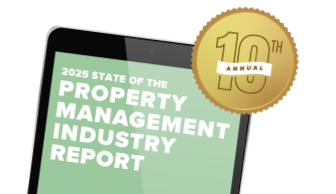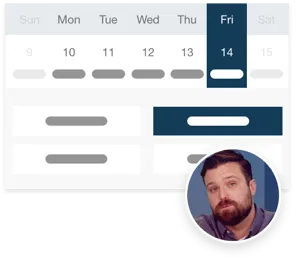In the property management business emergencies are inevitable. How swiftly and effectively you address these emergencies is what you can control. Your approach can significantly impact the profitability of each property in your portfolio, tenant satisfaction, relationships with your clients, and compliance with legal obligations.
This post will help you manage these kinds of emergencies with expertise and promptness.
Identifying Common Types of Maintenance Emergencies
A rental property maintenance emergency is any situation that requires immediate action to prevent extensive property damage and keep tenants safe. Understanding the various types of maintenance emergencies is the first step in managing them effectively. Here are some of the most common issues property managers face:
Plumbing Issues
Plumbing failures, such as burst pipes, severe leaks, or backed-up sewage, can cause significant water damage and pose health hazards. For instance, a burst pipe in winter can flood your property and lead to extensive repairs if not addressed promptly.
HVAC Failure
Heating, Ventilation, and Air Conditioning (HVAC) systems are essential for tenant comfort and safety. During extreme weather conditions, a malfunctioning HVAC system can create uncomfortable or even dangerous living conditions, requiring immediate attention.
Electrical Problems
Electrical malfunctions, such as power outages, short circuits, or exposed wiring, present serious fire hazards and can endanger tenant safety. For example, an unaddressed electrical short could lead to a fire, causing severe property damage and potential loss of life.
Water Damage
Water damage resulting from roof leaks, flooding, or plumbing issues can quickly deteriorate property structures and lead to mold growth, posing health risks to tenants. A leaky roof during a rainstorm can cause extensive damage to your property’s interior if not promptly repaired.
Structural Damage
Issues such as foundation cracks, compromised walls, or collapsing ceilings are severe and necessitate immediate action to prevent further damage and ensure tenant safety. For instance, a ceiling collapse due to water saturation can result in significant injury and property damage.
Step-by-Step Guide for Handling Emergencies
When an emergency arises, follow this structured approach to address the situation quickly and without cutting any corners.
1. Assessment
Evaluate the severity of the issue. Determine whether the problem poses an immediate risk to tenant safety or property integrity. For instance, a minor leak might be manageable, but a burst pipe requires urgent action.
2. Immediate Action
Take prompt steps to mitigate damage. This might include shutting off the water supply in case of a burst pipe or turning off electricity if there’s an electrical hazard. Prioritize tenant safety.
3. Vendor and Contractor Coordination
Establish a network of reliable vendors and contractors. Having trusted professionals on speed dial can expedite repairs and minimize damage. A pre-vetted plumber who can respond within an hour is invaluable during a plumbing emergency. The same holds for other vendors well-suited to specific repair needs.
4. Tenant Communication
Communicate clearly and promptly with tenants about the situation. Keeping them informed, safe, and comfortable is one of the most impactful things you can do as a property manager to alleviate stress and earn their trust and loyalty. This can include small but important steps such as updating tenants via email or text about repair timelines and safety measures can help manage their expectations.
5. Documentation
Document everything meticulously. Keeping detailed records of the issue, actions taken, and communications can be vital for insurance claims and legal compliance. For instance, photographing water damage and logging repair efforts can support your insurance claims.
Best Practices for Preventing Future Emergencies
The single most important approach to avoiding emergencies is scheduling proactive, preventive maintenance. Here are some best practices to take:
Regular Inspections
Conduct routine inspections to identify and address potential issues before they escalate. For instance, regular HVAC check-ups can prevent unexpected failures during peak seasons.
Preventive Maintenance
Implement a preventive maintenance schedule. This includes regular servicing of HVAC systems, plumbing inspections, and electrical safety checks. For example, annual roof inspections can identify and repair minor issues before they lead to significant leaks.
Tenant Education
Educate tenants on how to identify and report potential issues early. Providing them with guidelines on what constitutes an emergency and how to respond can quicken your reaction time. For instance, informing tenants about the signs of a gas leak and the importance of immediate reporting can prevent disasters.
Using Technology Strategically to Prevent and Handle Property Maintenance Emergencies
Software can keep you responsive and organized both when you’re conducting preventative maintenance and handling emergency repairs. Tools such as Buildium have a proven track record of helping property managers tackle the unexpected and unpredictable.
Read More: Stahl Enterprises uses Buildium to clean up after a once-in-a-lifetime winter storm
The main ways software helps in maintenance emergencies comes down to these key features:
- Work order management features that make it easy to submit, assign, and track the progress of jobs
- Mobile apps that help tenants and team members communicate in the field and on the go
- Dedicated tenant and owner communication portals that act as a go-to channel to keep everyone in the loop
- Vendor records that let you see the track records and contact information of all the professionals you work with, making it easier to assign the right person to the job
- A maintenance contact center that takes the bulk of the work order request work off your team’s shoulders while still giving you full control and visibility into every job
Look for software that checks all of these boxes to set your team up with tools that work under pressure while also making your day-to-day maintenance tasks easier.
Staying Ahead of Property Maintenance Emergencies
By understanding common emergencies, following a structured response plan, and implementing the preventive measures in this guide, you can dodge costly repairs while protecting your tenants and your clients’ investment. Remember, preparation and proactive management are your best tools in mitigating the impacts of maintenance crises.
By following the steps we covered and choosing the right tools to support your team, you’ll be well-equipped to handle any emergency with confidence and professionalism.
Read more on Maintenance

